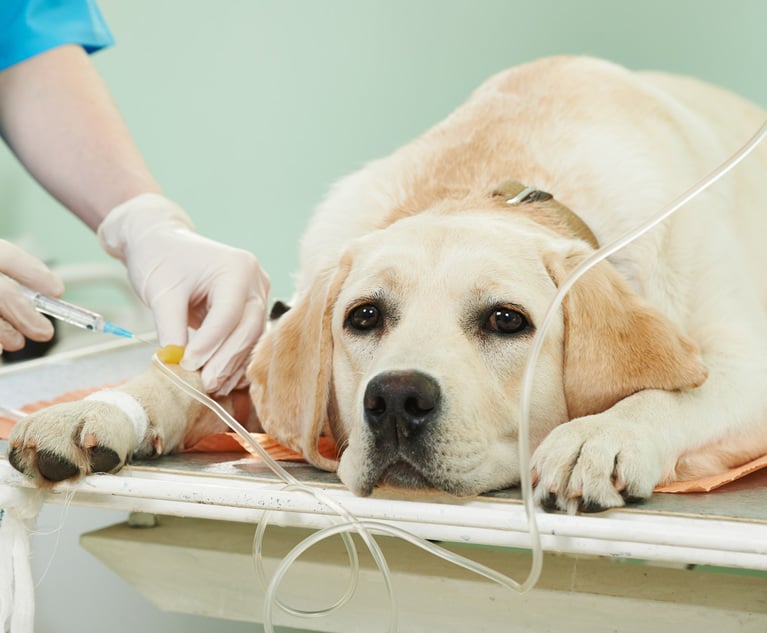In looking at medical professional liability financial results,some people might say that pigs are indeed airborne.
|Many industry observers expect overall 2008 property-casualtyunderwriting and investment performance to reflect significantlydeteriorating results-- separately and combined. In fact, insuranceanalysts at A.M. Best expect something approaching a 10 percentdecline in surplus.
|For its part, the medical professional liability line should beexpected to share in some aspects of the deteriorating investmentresults, but early signals are that expectations for deterioratingunderwriting results may not be realized.
|It may seem odd to discuss medical professional liability asthough it could have its own underwriting and investment resultsbut, in substantial measure, it can. Because so much of thecoverage is provided by companies that specialize in the businessor by captives and self-insured programs, we can review both ofthese drivers of financial outcomes--something that can't be doneeasily for most other lines of business.
|In addition, medical liability coverage, because of itslonger-than-average payout duration and the impact investmentincome has on its financial results and pricing, can be moresignificantly affected by the financial environment than otherlines of business.
|So, when do the pigs get involved and why are they flying?
|Over the last 30 years or so, the expectation and reality forthis coverage has been to lose money on underwriting and make it upon the predictable investment income. Today, however--and here comethe pigs--lower investment returns have driven many insurers toprice to make an underwriting profit.
|Further, the underwriting results seem more stable thaninvestment results over the last few years and, in severalinstances, they are covering investment losses--the reverse of thelong-term history for this coverage.
|UNDERWRITING IS KEY
|From an underwriting standpoint, we began 2008 after two yearsof net combined ratios under 100, including an approximate 85combined ratio for 2007. (Editor's Note: The industry aggregatecombined ratios for the med mal line were 90.6 in 2006 and 84.7 in2008, according to results compiled by Highline Data, the dataaffiliate of National Underwriter.)
|These are record lows.
|In over 30 years of reporting medical professional liability asa separate line of business, combined ratios have been below 100 inonly four other calendar years.
|Preliminary summaries of 2008 annual statement data wouldsuggest a potential further reduction in the combined ratio for2008 of perhaps 3 to 5 points. These results are being driven bycontinued better-than-expected outcomes on prior-year losses, whichhave produced favorable reserve development in the current calendaryear and which occur coincidental with the building momentum ofdownward pricing adjustments.
|Although this is still a difficult claim environment, thefavorable development reflects the fact that more is now knownabout changing circumstances as a result of tort reform legislationin some jurisdictions and the debate about it in others.
|A few observations on this point:
|o Lower claim frequency, an important factor in the improvedresults of the last few years, appears to have bottomed out and, insome jurisdictions, may be increasing slightly.
|o There are reduced concerns about the likelihood that lowerclaim frequency could result in claims being of higher quality andtherefore costing more because more claims close with indemnitypayments. While more time is needed to fully resolve this concern,current results are benefiting from what is known so far.
|o Claim severity levels appear to have stabilized coincidentalwith the timing of the tort reform actions and debate. Thebetter-than-expected severity is making a contribution to improvedresults.
|o Costs of defending claims, on the other hand, appear to beincreasing more rapidly than claim payments. This development,however, has not outrun the positive developments.
|INVESTMENT INCOME DROPS!
|It's clear that 2008 investment results will not be as favorableas prior years. The pre-tax investment gain from insuranceoperations (excluding investment income on surplus) was in the17-18 percent range as a percentage of net earned premiums for thelast two years--fairly good results despite the lower interest rateenvironment and weak equity returns.
|Again, based on preliminary statement data, it is a good bet2008 results will be half or less than the 2006/2007 results.
|The poorer investment results come in two flavors--the"not-so-good tasting" and the "awful tasting."
|In the first category are the much lower interest ratesavailable on fixed income instruments. New cash flows, maturingassets or reinvestment of interest income on existing assets allare being put into a market with very low yields.
|The second category is the realized losses on sales of assets,particularly equities. Additionally, in a fairly new subcategory of"awful," the impact of being forced to write-off nonperformingassets or to write-down assets whose values have fallen undercertain circumstances (e.g., value fallen by some percentage for aspecified period of time) or due to some other variation ofmark-to-market. All of these combine to produce a lower and morevolatile investment income contribution to operating results.
|These results are reasonably visible for medical professionalliability specialty carriers because they must report theirfinancial results in statutory annual statement detail. They may beless visible for other entities funding for med mal exposures, likespecialty captives and self-insured programs--many of whichdiscount funded amounts to reflect expectations of investmentearnings between the time of an event, report and disposition of aclaim.
|These entities will be dealing with the issue of funding moredollars to cover the reduction in future investment returnexpectations and the already realized losses to current fundedamounts.
|In summary, it is business "unusual." Expectations of theeconomic drivers have been turned upside down. Who would havethought 2008 underwriting results would outperform, and even carry,investment results?
|Clear the flight pattern, the pigs are airborne!
|So what's next?
|Well, we should not have expected that frequency would continueto decline indefinitely--and it definitely has not. The bigquestion from this perspective is whether it will stabilize or moveback up. If it goes up, will it be to longer term historic levelsor somewhere between current lower levels and higher historiclevels?
|Claim severity trends have been modest over the last severalyears and one might reasonably ask whether that will continue. Alow economic inflationary environment has helped, but given thecurrent circumstances, will that continue as well?
|A potentially constraining factor is the predominant $1 millionlimit on physician-purchased insurance, but one might expect anincreasing number of excess of policy limit claim awards as aconsequence.
|Regarding defense costs, while insurers and self-insurersstruggle with managing the increasing costs of defending claims,these efforts must be balanced with the obligation to provide anappropriate defense and the tradeoff between money spent onindemnity and expense.
|In addition, we should keep a watchful eye on enacted tortreforms to see whether they withstand court challenges. There havealready been challenges in a few jurisdictions. With the change inthe political landscape, some would argue there is a greaterlikelihood of tort legislation being overturned.
|On the investment side, it is not clear that all the bad newshas been identified and recorded. The stock market movements in thefirst quarter, along with the continuing downward pressure on otherassets, may require further write-downs of assets during 2009. Iftrue, this will set the stage for another year of poor investmentresults.
|Finally, and least understood, is the impact a national healthcare program might have on coverage.
|Stay tuned; the pigs will have to land sometime!
|James D. Hurley is a consulting actuary forTowers Perrin in Atlanta, Ga. He is also an Associate of theCasualty Actuarial Society and a Member of the American Academy ofActuaries. He may be reached at [email protected].
Want to continue reading?
Become a Free PropertyCasualty360 Digital Reader
Your access to unlimited PropertyCasualty360 content isn’t changing.
Once you are an ALM digital member, you’ll receive:
- All PropertyCasualty360.com news coverage, best practices, and in-depth analysis.
- Educational webcasts, resources from industry leaders, and informative newsletters.
- Other award-winning websites including BenefitsPRO.com and ThinkAdvisor.com.
Already have an account? Sign In
© 2024 ALM Global, LLC, All Rights Reserved. Request academic re-use from www.copyright.com. All other uses, submit a request to [email protected]. For more information visit Asset & Logo Licensing.








